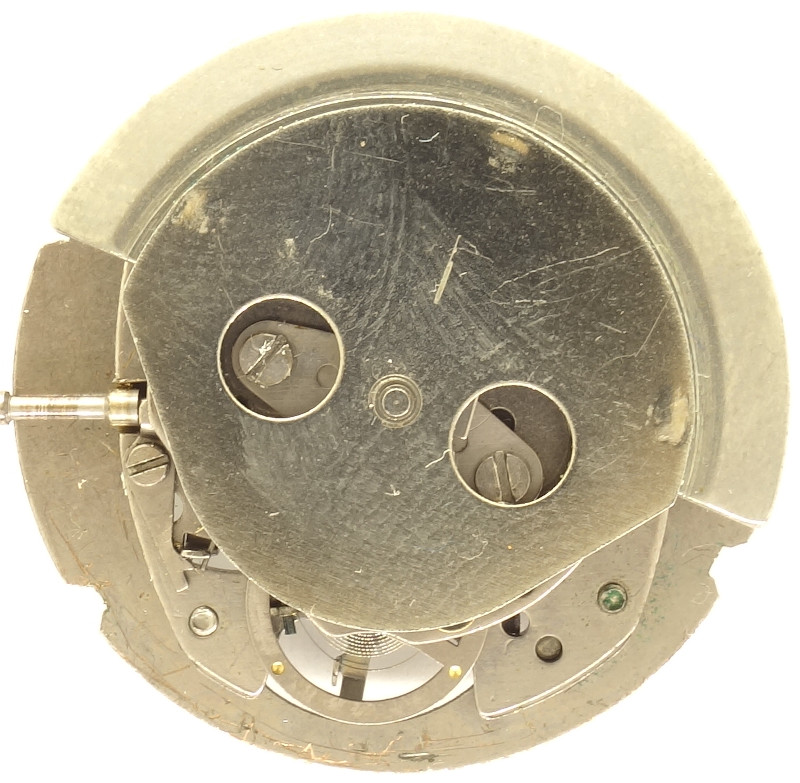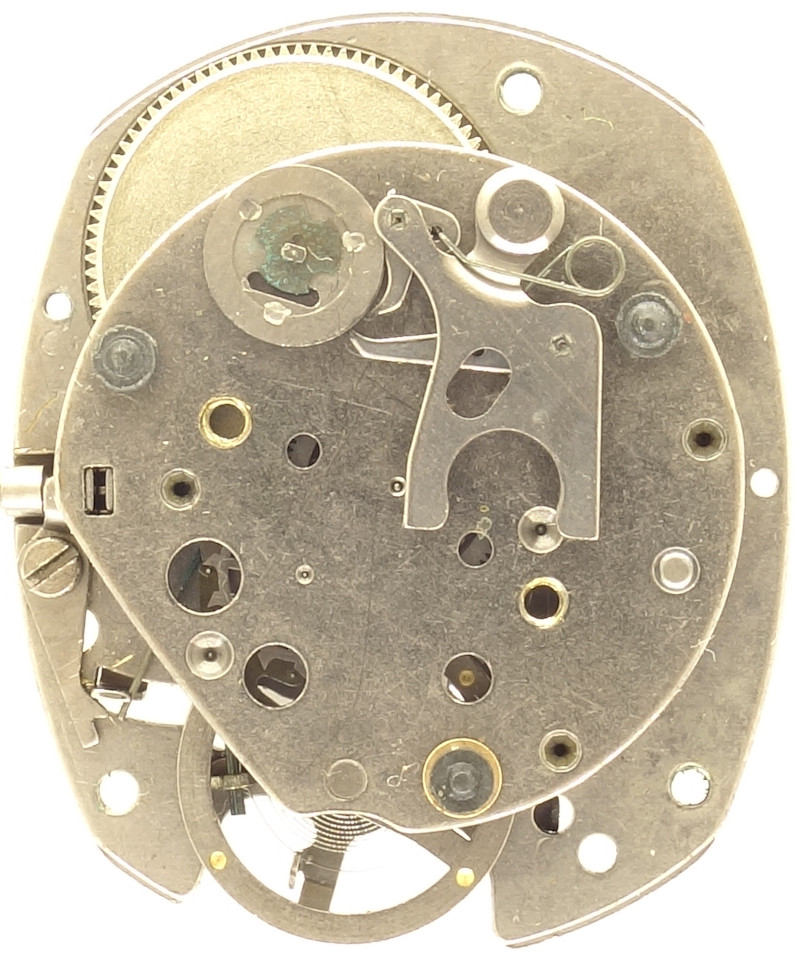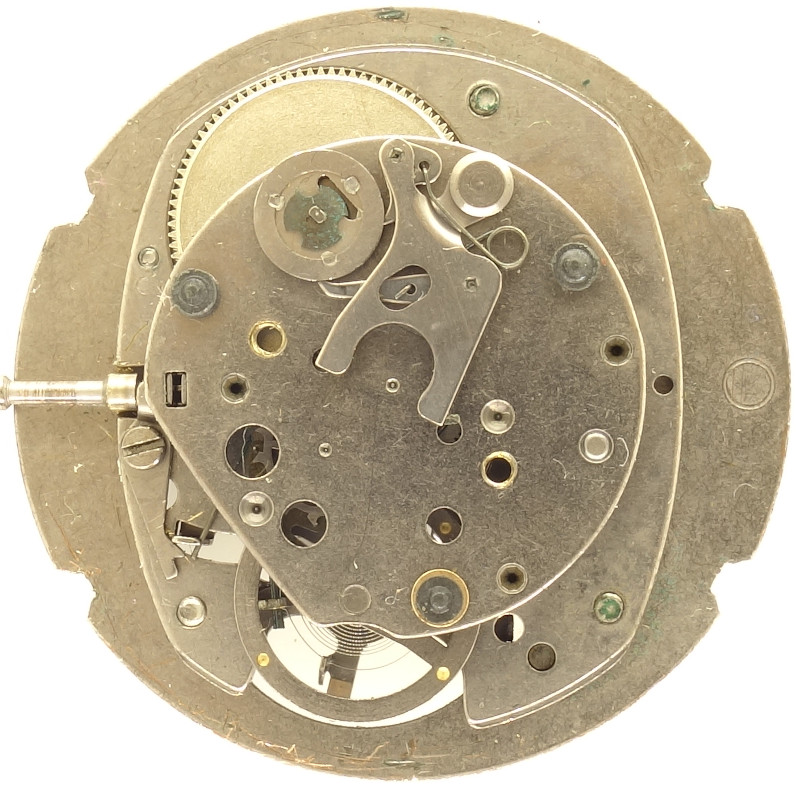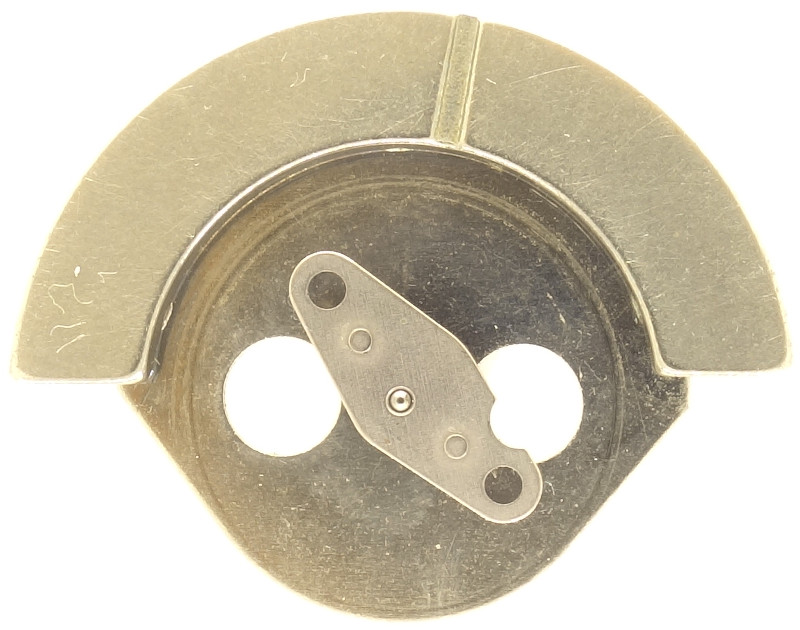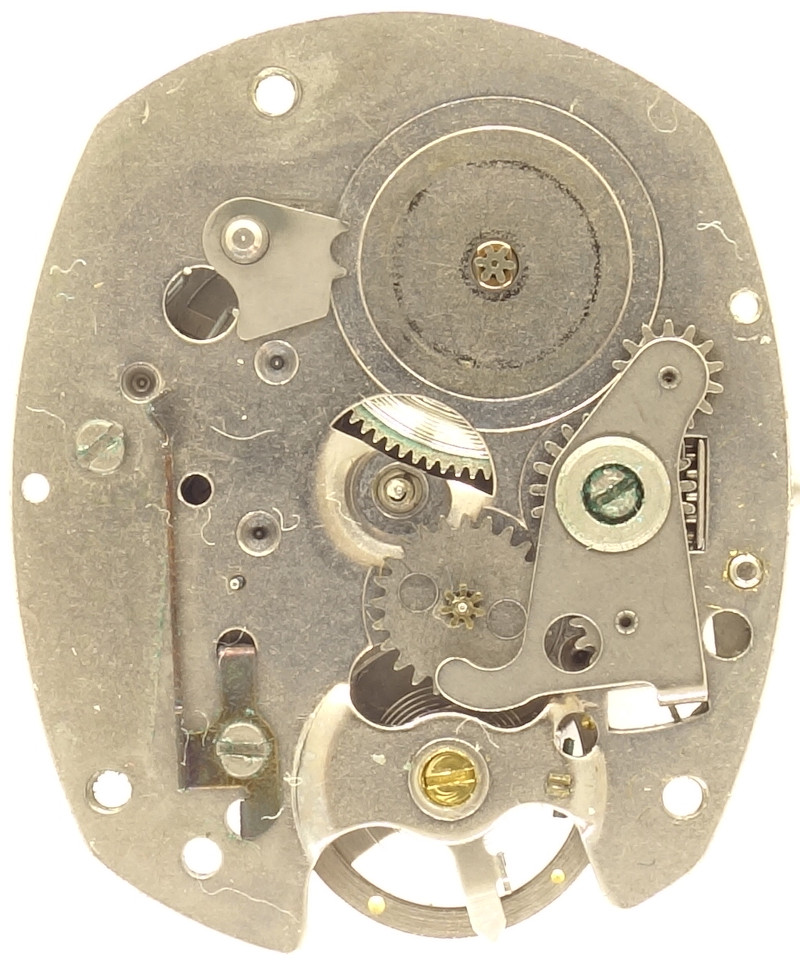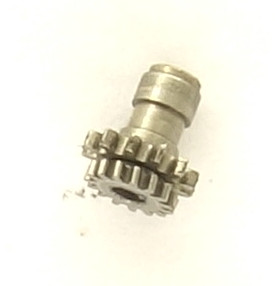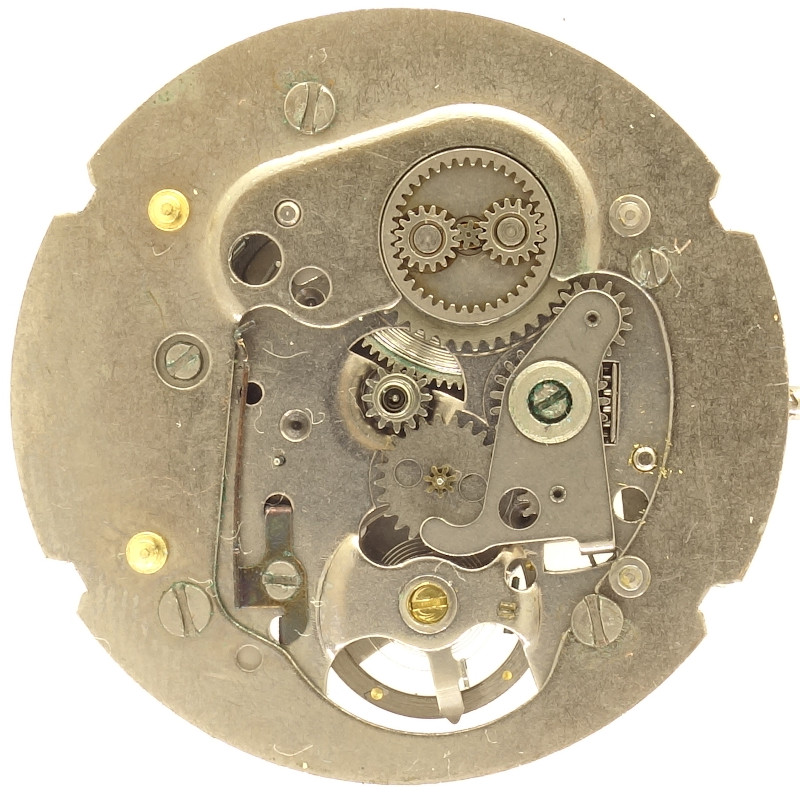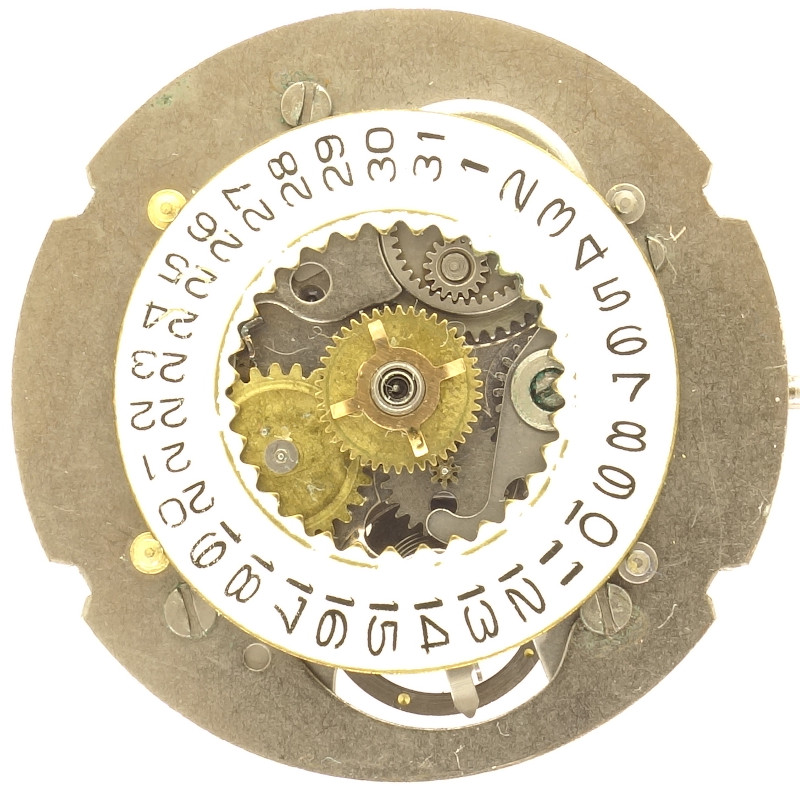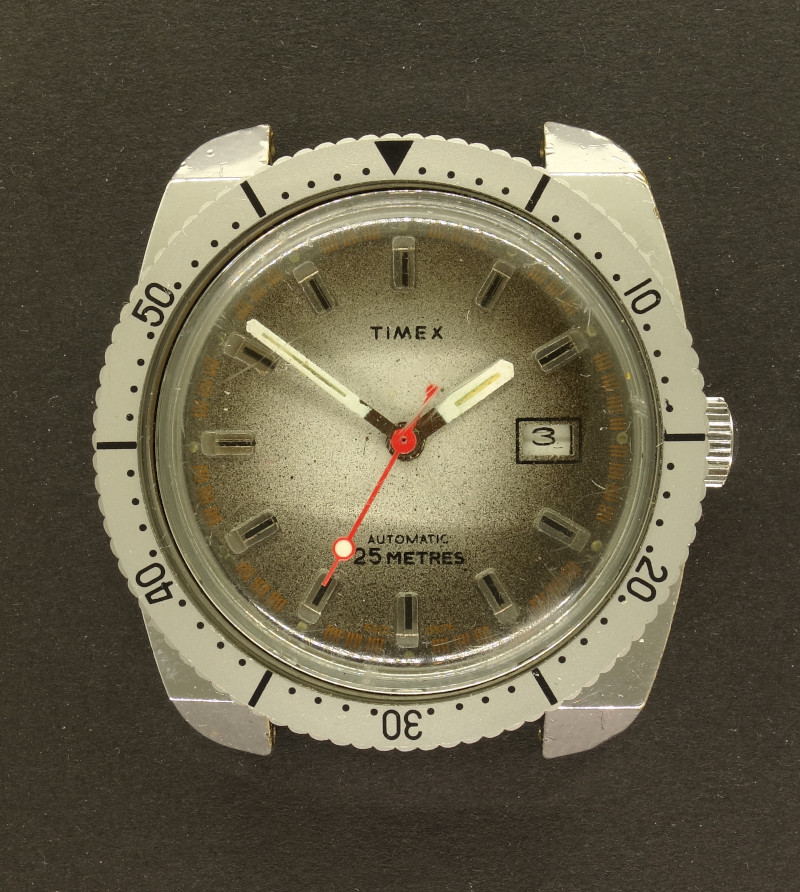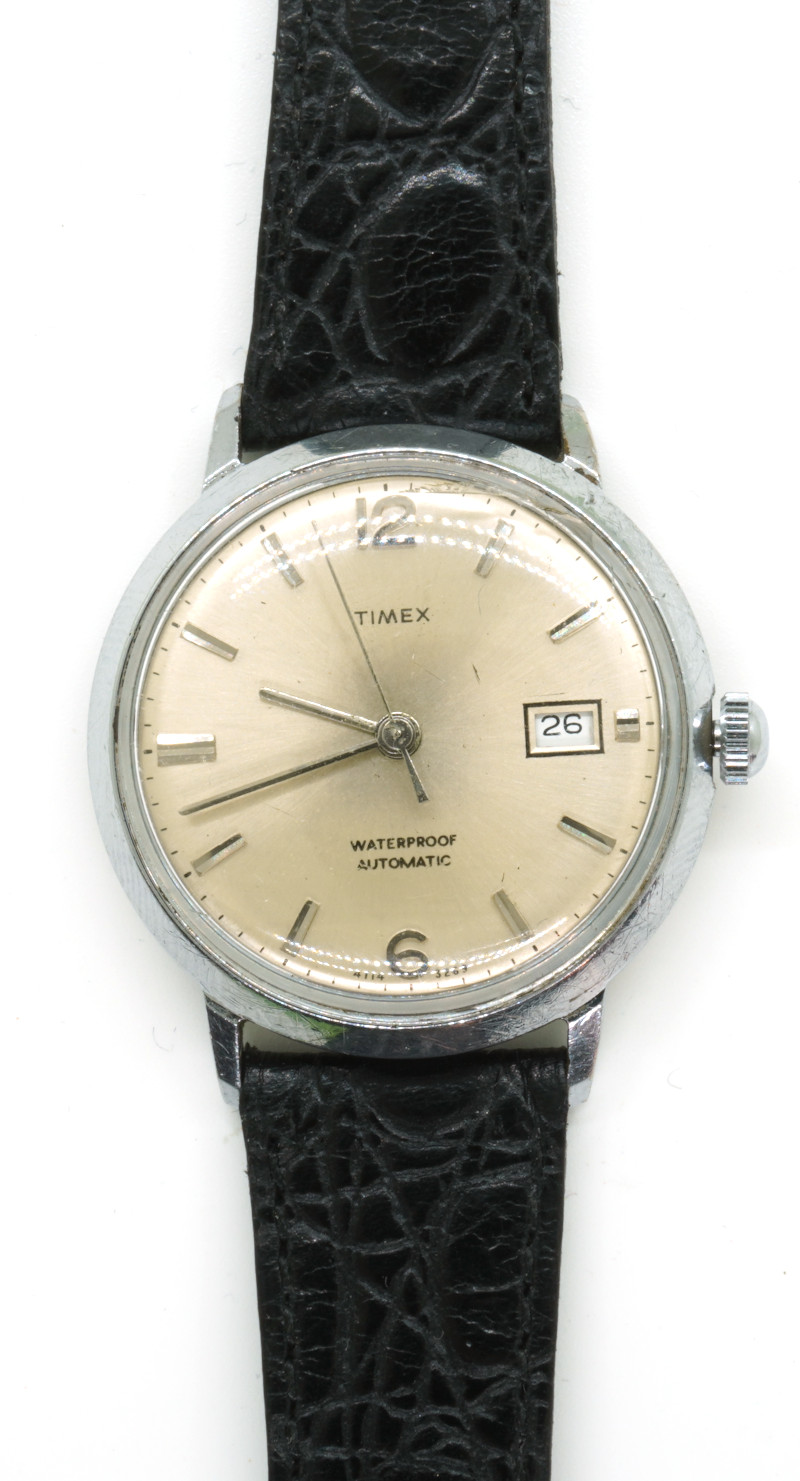Description
The Timex M32 is part of the first series of mechanical movements (windup and selfwinding). It is the version with a date indication.
Since all gears, the lever and also the balance wheel are beared under one single plate, this movement was not torn down into pieces, only the calendar mechanism, which turns the tonneau-shaped movement into a round one, could be removed.
As on all other movements of that series, there were no rubies used.
A two-leg anular balance beats with 18000 A/h and controls a pin lever movement. There’s no conventional shock protection, but the massive, v-shaped bearings and axle make this movement very robust and immune against shocks.
The selfwinding mechanism consists only of an oscillating weight, an excenter changer with two pawls, a driving wheel, and axle, which goes through the mainspring barrel to the dial side, where the planet reduction gear and the ratchet are located.
The oscillating weight with its excenter is mounted with two screws on the gear train bridge.
On the yet empty dial side, you see the ratchet, the rocking bar winding mechanism and the indirectly driven time indication works, of which the cannon pinion engages with the mainspring barrel.
The cannon pinion consists of two concentrical gears, connected with a slipping clutch. The lower wheel engages with the mainspring barrel, the upper one with the change- and hand setting wheel.
Here you can see the planet gear of the selfwinding mechanism. The lower part engages with the mainspring barrel core.
The hour wheel is also double executed. The lower part engages with the changer wheel and the upper one drives the switching wheel of the calendar mechanism.
The calendar mechanism is as simple as possible: At position 8 o’clock, there’s the switching wheel with its tiny pin, that slowly advances the date wheel.
A constructive oddity of the movement is, that the date wheel is beared flyingly between four pins. It is held vertically in position by the dial only. That means, when only one foot of the dial is broken (which happens easily), the date ring can no longer be held in position.
In the lab
Timegrapher result
For a pin lever movement, which only got a non-professional service, the rates are pretty OK. A true revision should have resulted in higher amplitudes and this better rates, but for obvious reasons, a full teardown of the movement was avoided.| horizontal positions | |||
|---|---|---|---|
| dial up | -34 s/d | 175° | 1.8ms |
| dial down | +16 s/d | 216° | 1.6ms |
| vertical positions | |||
| crown right (12 up) | +17 s/d | 194° | 2.7ms |
| crown up (3 up) | +20 s/d | 178° | 1.8ms |
| crown left (6 up) | -3 s/d | 174° | 1.7ms |
| crown down (9 up) | +12 s/d | 177° | 2.4ms |
Technical data
| Manufacturer: | Timex |
| Caliber: | M32 |
| Caliber base: | Timex M24 |
| Size: | 13''' (measured: 29,2mm) |
| A/h: | 18000 |
| Escapement: | Pin lever |
| Balance types: |
monometallic anular balance (two legs) |
| Shock protection(s): |
none |
| Balance bearing / direction hairspring: | Counterclockwise |
| Moveable stud: | no |
| Adjust mechanism: | Hairspring key |
| Construction: |
|
| Construction type: | solid construction |
| Winding mechanism: | rocking bar winding system |
| Setting lever spring: | 2 hole(s) |
| Features: |
|
| Mentioning in literature (years): | 1965 - 1970 |
| Inventory number: | 21013 |
